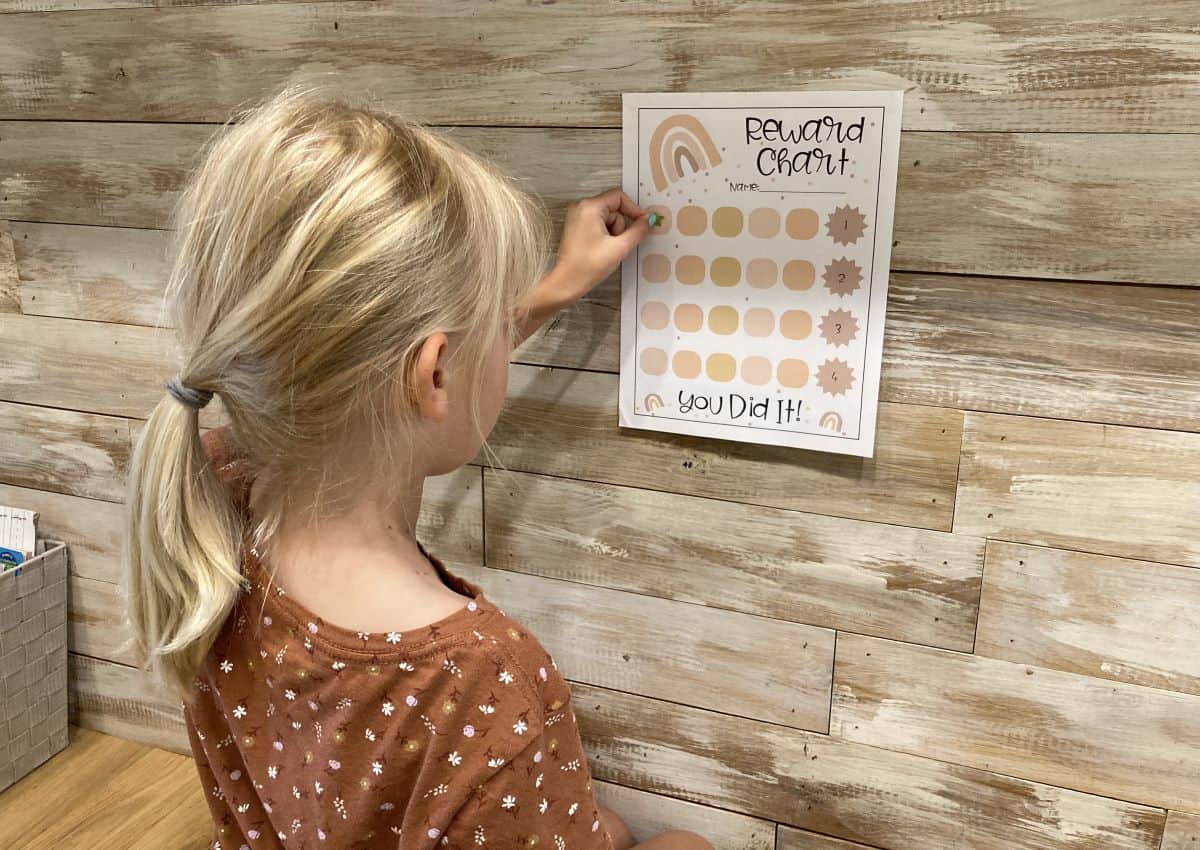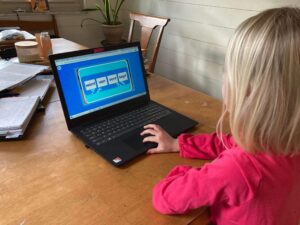Reward charts can be an excellent tool to use in your homeschool, especially if your child is struggling with consistency or discouragement in a particular area. I’ve utilized reward charts at various times for various things, and while not foolproof, they can provide inspiration and motivation for kids. Perhaps it’s time to give reward charts a try in your homeschool!
Understanding Reward Charts
Most of us understand what a reward chart is: think of your child putting stickers on a log sheet for your local library’s summer reading program. That is, in essence, a reward chart.
Simply put, a reward chart tracks a certain behavior for a certain number of times until a prize (reward) is given. You may also see them referred to by different names-reward chart, star chart, sticker chart, and behavior chart; different names, same idea.

Benefits of Reward Charts
Positive Behavior
Reward charts can be useful to encourage positive behavior in your child. For example, as part of your child’s before-school morning routine, perhaps you want them to tidy up their room after breakfast. A reward chart is a simple way to encourage the positive behavior of maintaining a clean bedroom.
Another example might be encouraging your child to complete a given assignment without a complaining attitude. Reward charts can help affirm the positive behavior we want to see present in our homes and homeschools.
Motivation and Engagement
Reward charts can help motivate our kids because they can see a visual representation of their progress. We can tell our 6-year-olds that they need to tidy their room three mornings in a row and then they will earn a prize, but young kids can struggle to understand that idea. With a reward chart, they can see their progress easily.
In our homeschool, my 2nd grader struggled with reading. Because she had to work harder at it than other subjects, I could often see her demeanor change when it was time for reading.
I changed my approach to the lessons. I tried to make them fun and engaging, AND I added in a little extra motivation as well with a reward chart. After four lessons in which she gave her best effort, she could pick a prize from a little prize box I kept in my closet. It mostly contained fun erasers, although at various times it had sticker sheets, pencils, gum, etc.
You know what’s most motivating for your students, so use that information to help curate your prizes/rewards. Also, decide how often you want to reward your student.
I rewarded my daughter every 4th lesson, but perhaps you offer a reward after each lesson. Maybe they get rewarded just for completing the lesson no matter what. Perhaps a reward is given for completing a task with a good attitude.
Figure out the kind of engagement you need to see from your child and set things up to work for you and your family.
Build Responsibility and Independence
We can help instill a sense of independence in our kiddos when we give them age-appropriate tasks. My daughter is eight and I can pretty much tell her to clean her room and it looks great. How do I know she’s capable of it? Because a few times she was “making her room look pretty” and I was absolutely amazed. It looked awesome.
Sometimes, we’re unsure what our kids are capable of, so we need to work with them to find out. Could my daughter vacuum her room on her own? I don’t know. I’ve never asked. But, I could ask her to try while I observe and see how it goes.
Likewise, with homeschooling, perhaps your child is capable of a whole page of copywork. But, they struggle because a page of copywork is boring. You’ll have to decide if your child needs to be able to sit and do a whole page of copywork.
Sometimes, our kids push back and we have to urge them forward. We know what they are capable of. With some motivation from a reward chart, they can find out just what they are capable of as well. It’s worth investigating as we nurture our children toward more responsibility.
With some motivation from a reward chart, they can find out just what they are capable of as well.
Relationship Investment
By instituting a simple reward chart, we can build relationships with our kids. Ask your child if they have any goals. What is something they are struggling with? You just might be surprised by their answers.
Allow your child to decide where to hang their reward chart. Perhaps you let them choose between a couple of choices before you buy one. Maybe you assist them in crafting their own.
These small things are a great way to show your child that their ideas and opinions matter to you.
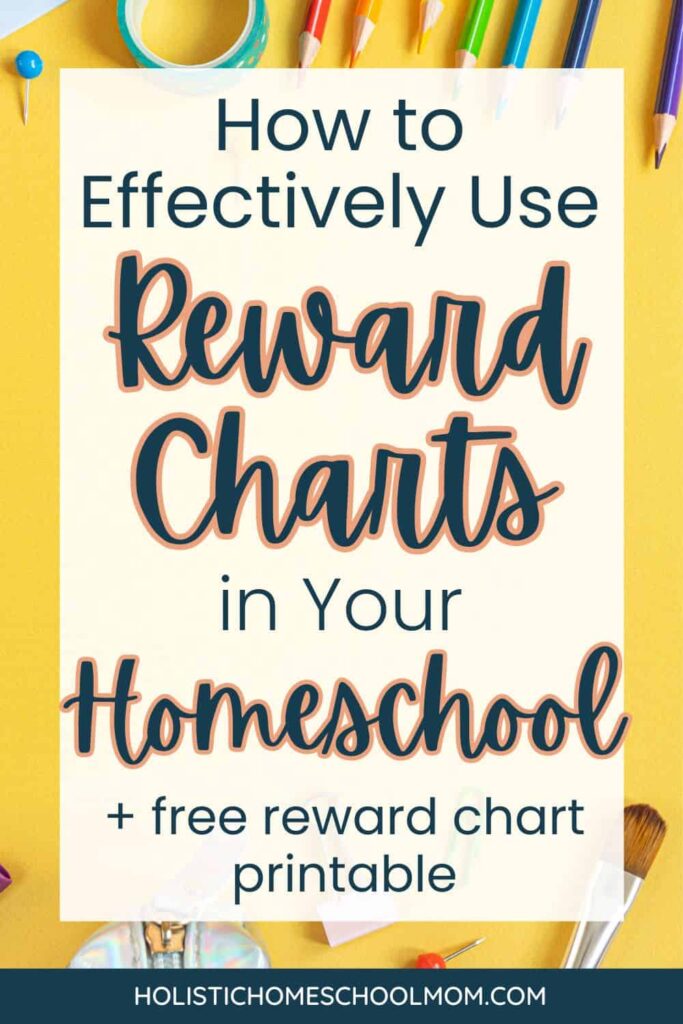
Effectively Implementing a Reward Chart
Make Expectations Clear
As previously mentioned, keep the goals attainable for your child’s age. Some children might be able to sit quietly for an hour of read-aloud time. Other kids might only be able to manage 15 minutes. If you’re looking to build longevity, for instance, start where you know your child will have success. Then, gradually increase the challenge slightly.
Additionally, make sure they know exactly what is expected of them to earn a stamp or sticker for their reward chart. If things are unclear, a reward chart could turn into a source of contention.
Choose Meaningful Rewards
When it’s time to decide on rewards, get input from your child. What motivates them? Do they have an eraser collection like my daughter’s? If so, a reward box with fun and unique erasers will be great motivation to help build her collection.
When my sons were little, they loved LEGOS. One time, I bought Lego kits of their choosing, and their good behavior during the school day would earn them a piece of the Lego kit.
It took a while, but they gradually obtained all their pieces and were able to put their kits together. This was motivating when they didn’t have many Legos. For a kid with a million Legos, this might hold little motivation.
You know your child best. Get their input and decide together. Perhaps it’s not even a physical item. Maybe the reward is staying up longer at bedtime, a trip to the movies, or a walk to the corner store for candy.
Consistency
One of the hardest parts of using a reward chart is consistency. It’s easy to forget about it amid a busy homeschool schedule, especially with multiple children.
My daughter is usually the one to help remind me that her chart gets a sticker. It’s best not to have too many charts going at once. Try to focus on one area at a time instead. As with most things, being consistent in utilizing the reward chart daily will help it stay present in your routine.
If a setback occurs and you’re seeing inconsistency with whatever it is you’re using the reward chart for, staying positive will keep things fun. The last thing you want to do is turn what is supposed to be a fun reward chart into something that feels punishing and not fun.
Choose Reward Charts Kids Will Love
It’s important to choose a reward chart your child will actually be excited about. Especially for preschool-age kiddos, a colorful reward chart will create a sense of fun.
Get access to this kid-friendly reward chart below. You can download this chart and find many more homeschool resources in my subscriber library.
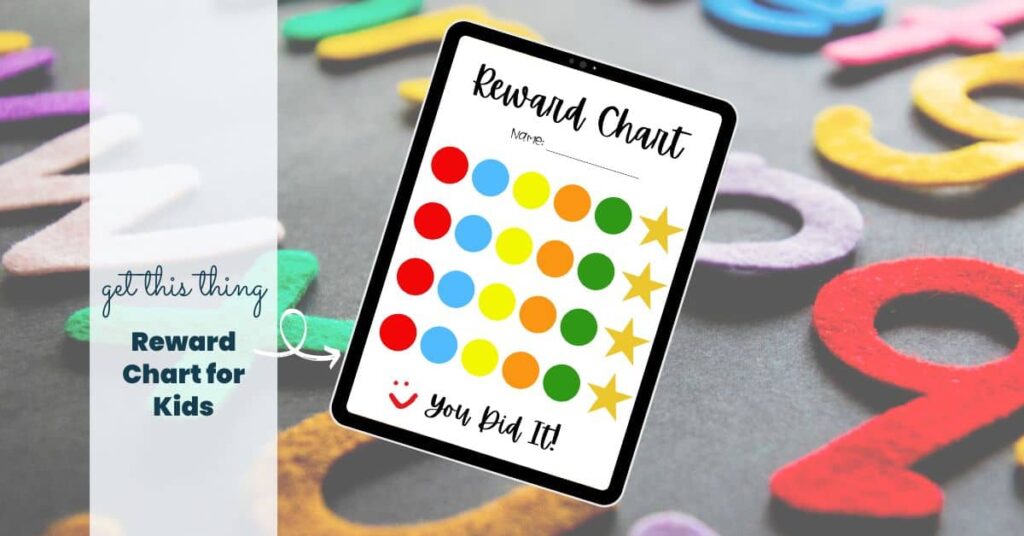
If you want something a little more snazzy, check out the reward charts in my Etsy store, Holistic Mom Creations. You get three different designs, perfect for whatever suits your mood.
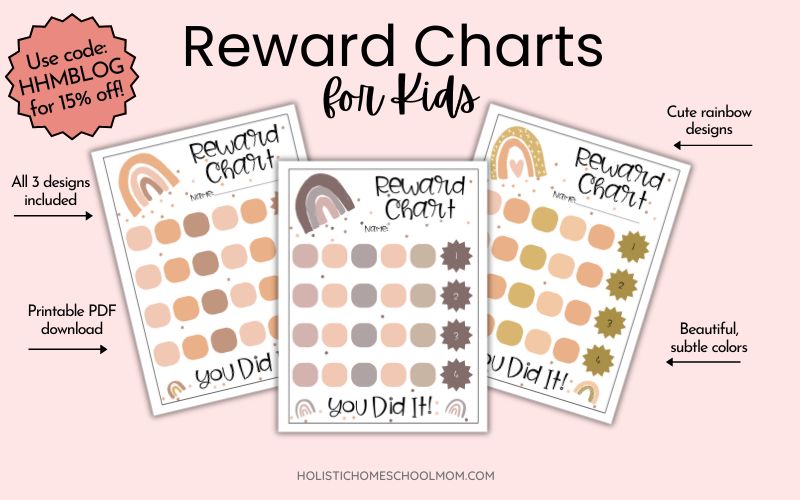
Concerns About Using Reward Charts
Will reward charts work perfectly for everyone? No. You may run into issues with a reward chart. For example, your child might lose interest in the reward chart. If this happens, you can re-evaluate the approach you’re taking.
Here are some helpful questions to consider:
- Does my child need more help to complete the task required to earn a sticker?
- Is my child too old for a reward chart?
- Is the reward my child is working for motivating or offered frequently enough?
- Does my child sense a disinterest or frustration with me regarding the chart?
Do what works for you and your family.
If you try a reward chart in your homeschool and it works well, that’s fantastic. If it doesn’t, consider switching things up and see if that changes things.
Many factors can contribute to whether a reward chart works well or not. If you find it’s not working don’t worry. Perhaps you can try again at another time. However, some children might not find a reward chart rewarding and that’s okay. Often, just our recognition of their hard work and some encouraging words or hugs are more rewarding than any chart.
Model Using a Reward Chart
Reward charts can be just as helpful for you, too! A fun idea might be for you and the kids to use reward charts together. As you utilize a reward chart to bring about change in your own life, you’ll be modeling something positive at the same time. Perhaps your charts can hang side by side as you encourage one another.
Conclusion
Reward charts can be a useful tool in your homeschool mom toolbox. Use them to help motivate your child in a difficult school subject, with a household chore you want to see completed consistently or to improve a behavior, such as listening quietly during morning time. However you use reward charts, I hope you find it a “rewarding” experience!

